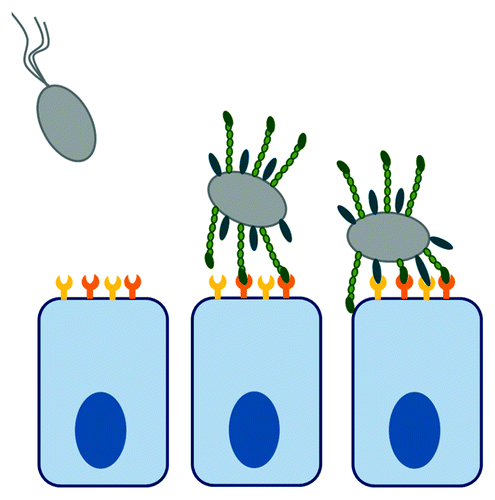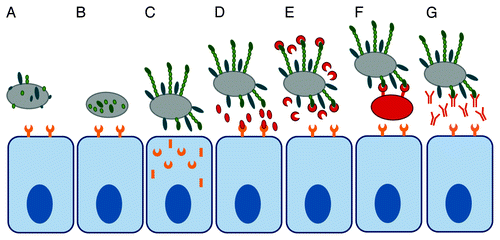Figures & data
Figure 1. Bacterial attachment to host cells. Upon encountering host cells, bacteria are attracted by weak, non-specific forces, which are driven by physicochemical properties of bacterial and host surface. Initial low-affinity attachment is driven by specific surface receptors but still allows the bacterium to sample the host cell surface. Initial interactions are reinforced by additional receptor pairing, leading to overall high affinity of binding.

Figure 2. Strategies for anti-adhesion therapy. Bacterial attachment can be inhibited by interfering with adhesin biosynthesis (A), adhesin assembly (B), or host receptor assembly (C). Binding can be inhibited by competitive replacement of the adhesin from the host (D) or of the host receptor from the adhesin (E) using soluble molecules or by using designer microbes (F). Antibodies against bacterial adhesins can block surface epitopes required for binding (G).
